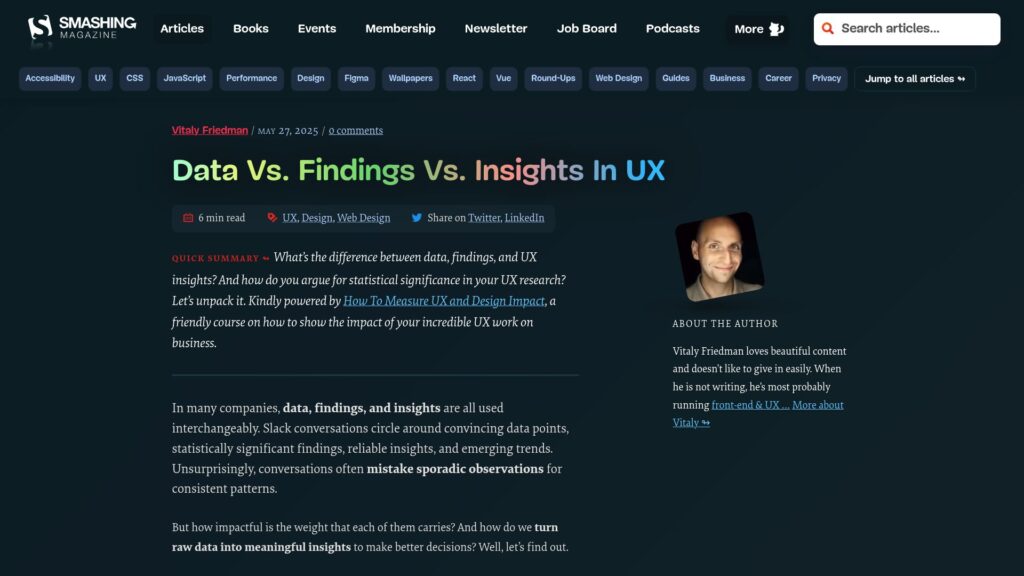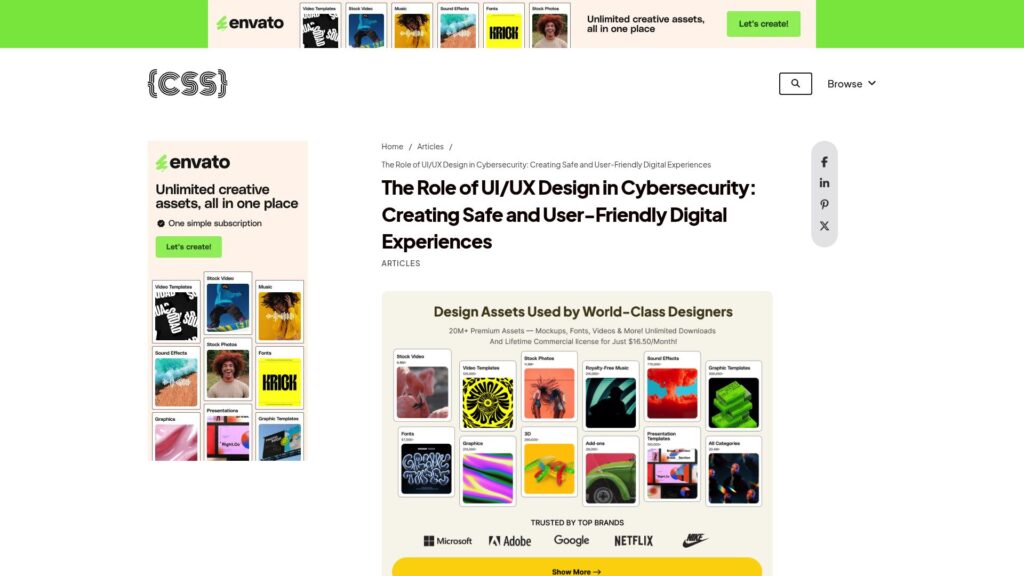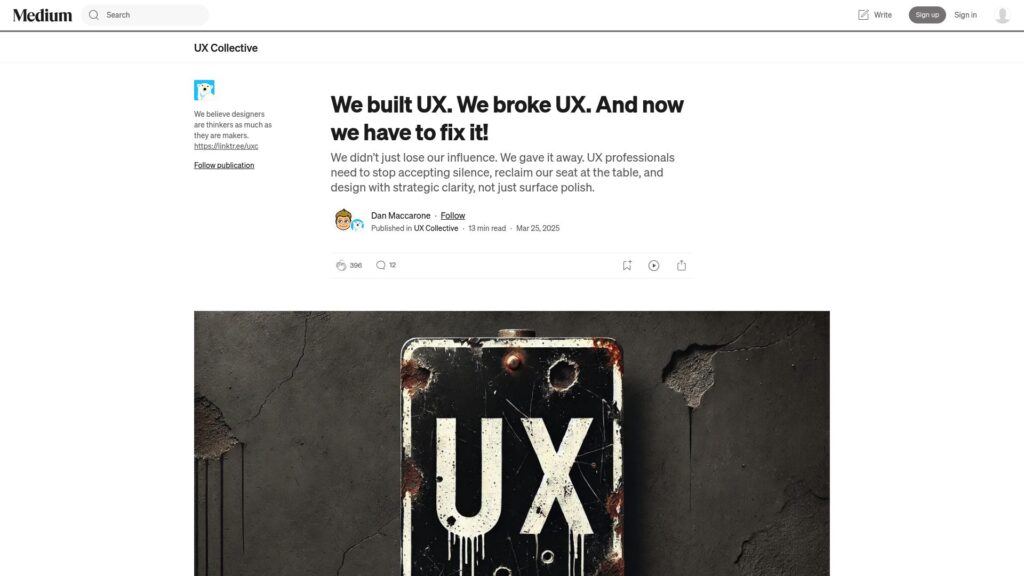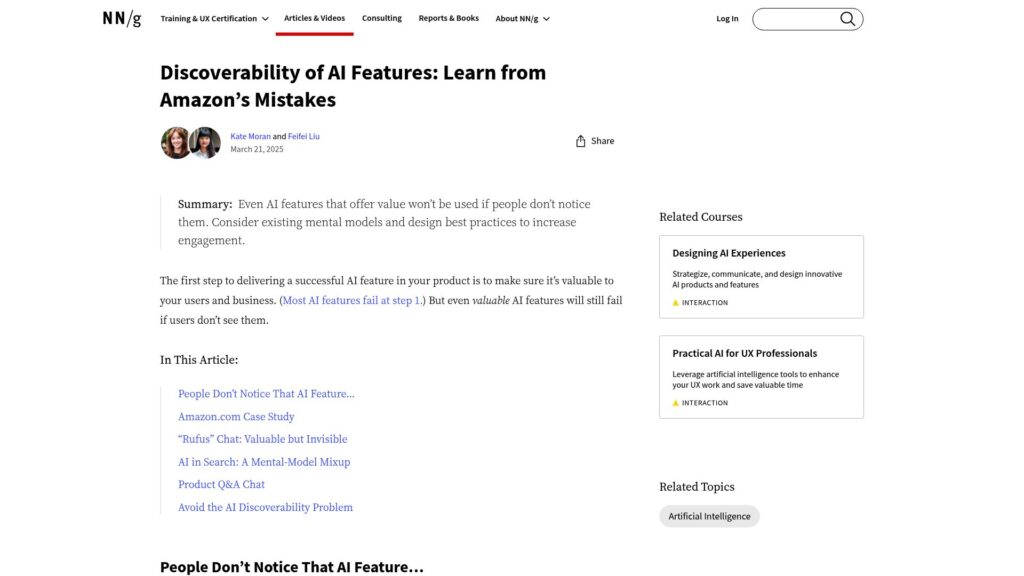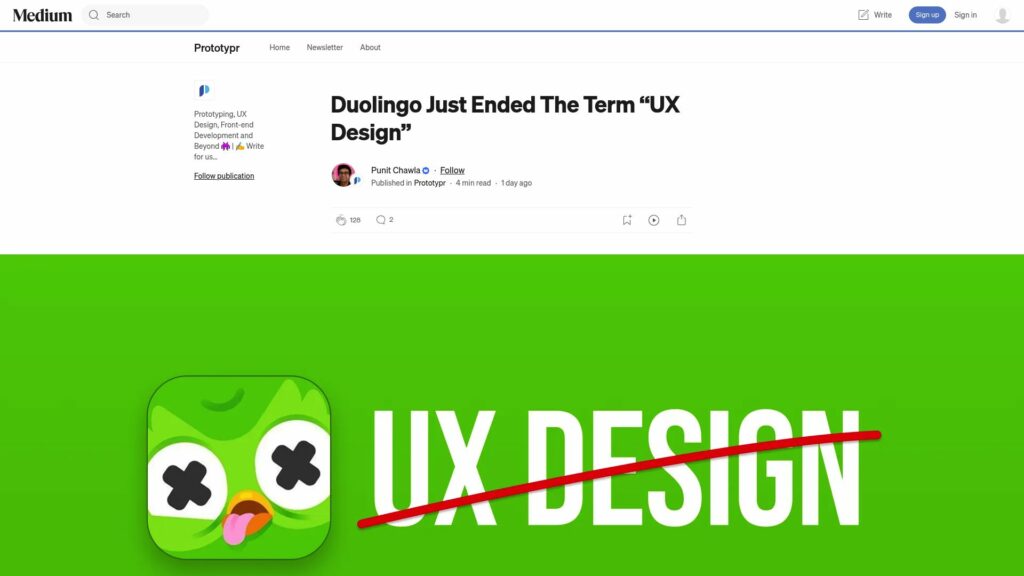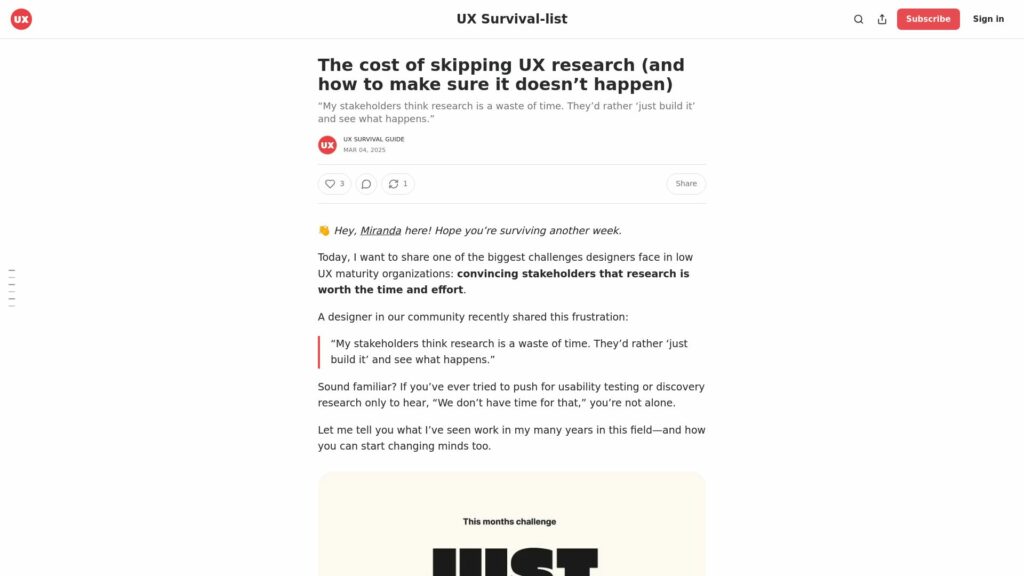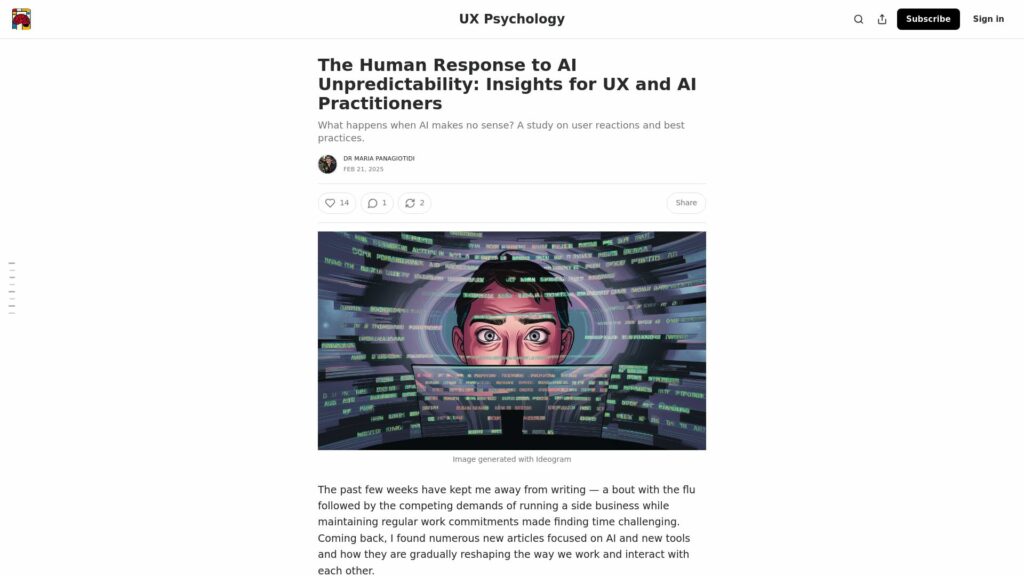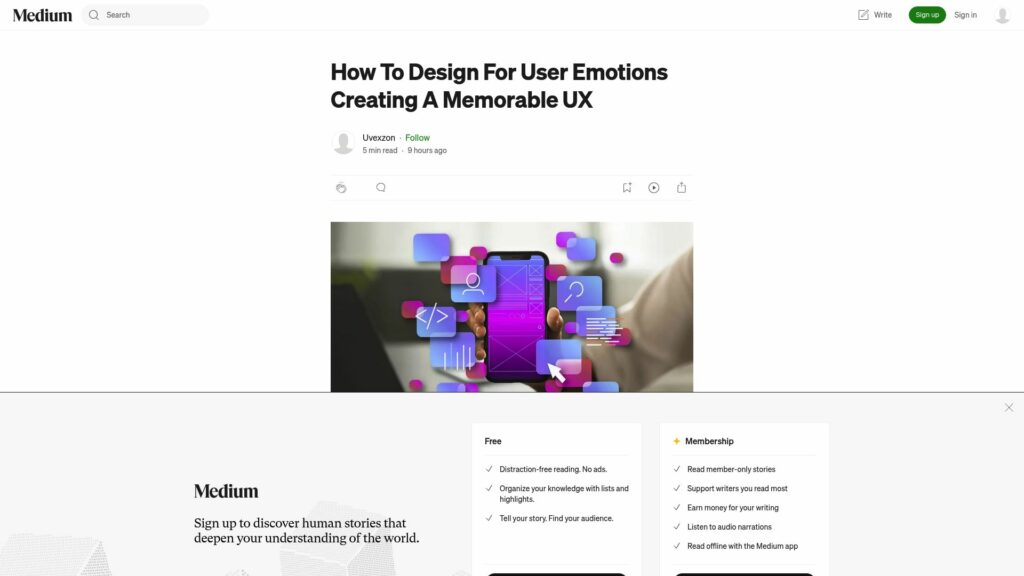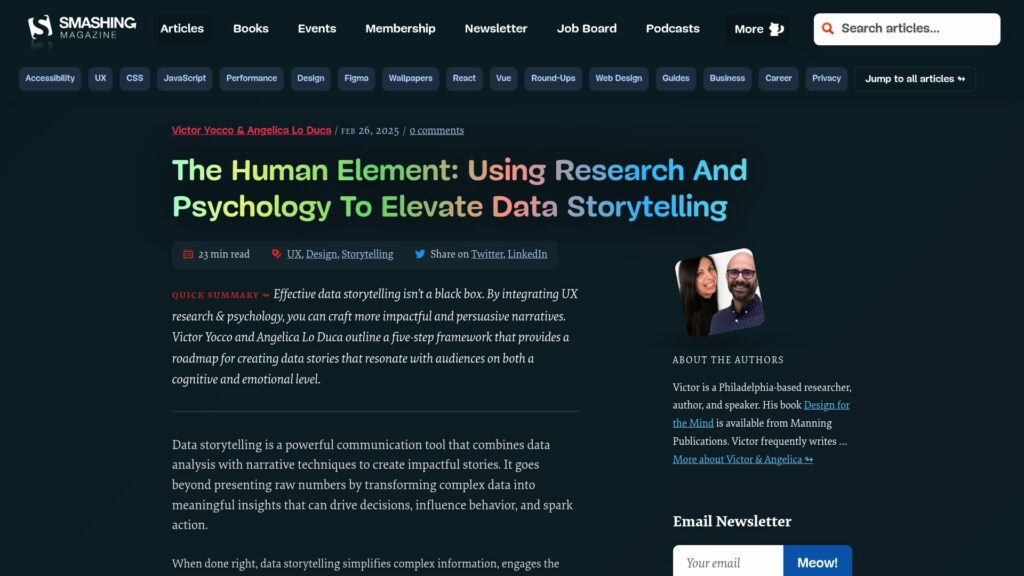Data Vs. Findings Vs. Insights In UX — Smashing Magazine
Data, findings, and insights in UX are often confused. Data: raw observations; Findings: patterns in data; Insights: actionable business opportunities derived from findings. Key distinctions are crucial for clear communication and decision-making in UX. Understanding these differences can prevent misconceptions, strengthen presentations, and ensure UX's strategic impact. Statistical significance is complex in qualitative research; insights should focus on user struggles and their implications rather than just participant numbers. The goal is to convey actionable recommendations that drive business value through storytelling.
https://www.smashingmagazine.com/2025/05/data-vs-findings-vs-insights-ux/
